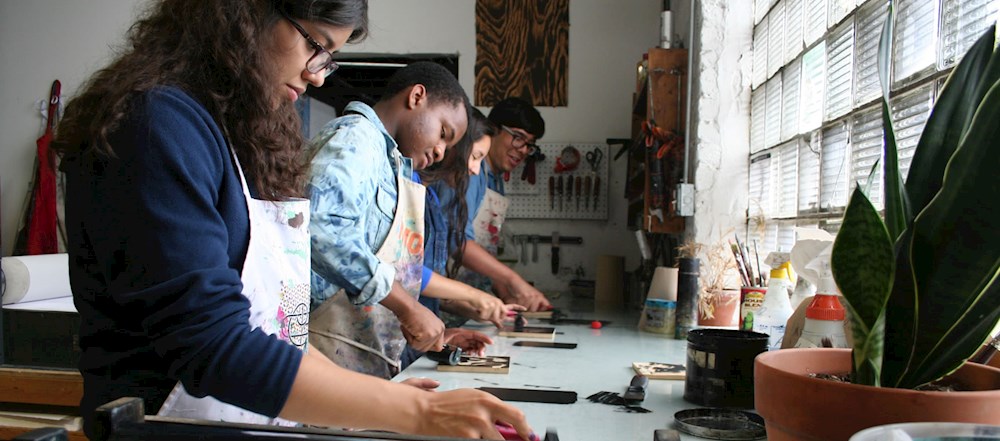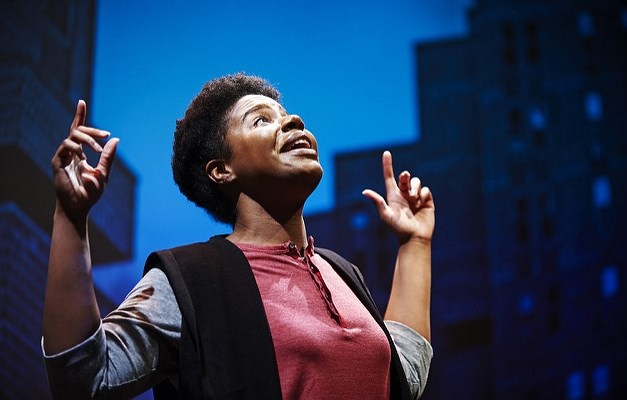As Relief Funding Dwindles, Arts and Culture Seek New Revenue Sources
8-minute read
Through COVID-19 shutdowns, reopening, and ongoing adjustments to new audience behaviors, relief funding has been a bulwark for the cultural sector. Much of this funding – especially from federal sources – has already been awarded, with a few key re-granting programs winding down through 2026. In public forums and internal discussions, many are wondering what the revenue landscape for arts and culture will look like after that point. Is there a revenue engine emerging that might fill this gap?
To answer this question and others we analyzed data from FY 2019 to 2023 collected from 233 organizations through the Cultural Data Profile.

Key Findings
- Greater reliance on contributed revenue remains a trend, with contributed revenue accounting for 61% of total operating revenue in FY 2023.
- Unrestricted Contributions rose by 16% in inflation-adjusted dollars over the five-year period. This rise was driven primarily by government funding, a trend especially pronounced for large organizations.
- On average, the 29 BIPOC organizations in this study more than doubled their contributed revenue (113% growth) even after accounting for inflation, whereas growth was 11% for non-BIPOC orgs.
- Among major private support stakeholder groups, only foundations increased their support above inflation. This rise was mainly driven by medium budget organizations.
- Earned revenue is recovering, but has not fully rebounded in absolute terms or in terms of the percentage of organizational expenses it covers.
- Education revenue remains 33% lower than pre-pandemic levels in terms of inflation-adjusted dollars.
- Single ticket/admissions revenue remains 35% lower than pre-pandemic levels in terms of inflation-adjusted dollars, with both attendance and the lowest ticket prices paid still lower than before the pandemic.
Inflation is an important backdrop to these trends, as the power of each dollar raised has decreased over the last few years. While some funding sources appear to remain steady without accounting for inflation, factoring in rising prices reveals a decline in terms of the buying power provided to organizations. Experiences have also varied by organization budget size, and by whether the organization is BIPOC or not. We explore all of these dynamics within this analysis.
Changing Revenue Composition
Total operating revenue in FY 2023 neared its return to pre-pandemic levels, though its composition shifted. Organizations became – and remain – more dependent on contributed revenue for their survival.
Earned revenue experienced an impressive recovery since FY 2021, but has not fully returned to its pre-pandemic levels, either as a percentage of overall revenue or in nominal terms.
Investment revenue rose to 13% of total operating revenue in 2021, possibly due to many organizations’ decision to increase their endowment draws to offset earned revenue losses at a time when the S&P 500 generated impressive returns. The presence of investment revenue was widespread across organizations in the cohort, including the majority of large organizations and 40% of small organizations. Only one in four BIPOC organizations reported investment revenue at least once during the five years.
Inflation represents an important aspect of this overall picture. Operating revenue was 14% higher in 2023 than in 2019 in nominal terms, but 4% lower once inflation is taken into account.
Shifts in Earned Revenue Sources
Organizations experienced significant shakeups in earned revenue through this five-year period. Signs of recovery are starting to appear, but no earned revenue sources have recovered to pre-pandemic levels.
Before the pandemic, education revenues served as the primary source of earned income for organizations, on average. However, this source sharply declined during the 2020 shutdowns – only beginning to recover in 2022. These revenues – which include tuitions from workshops, courses, classes, and lectures – were still 33% lower than they were pre-pandemic in inflation-adjusted dollars. While education revenues have not fully recovered by any means, they have improved more than any other earned revenue category in our analysis. This recovery trend is particularly strong for medium sized organizations, whose education revenues have increased 21% over pre-pandemic levels in inflation-adjusted dollars.
Ticket and Admissions sales, the second largest source of earned revenue for the average organization before the pandemic, have bounced back since 2021 but are still 35% lower than pre-pandemic levels in inflation-adjusted dollars. Subscription and Membership revenue had been on a long downward trend heading into the pandemic. It has made an even slower recovery, showing indications of a permanent reduction. These two trends hold constant across organization size.
A closer look at ticket prices and attendance, as detailed in the table below, reveals further insights into the driving factors behind this slow recovery and how they vary across budget size. For small and medium organizations, single ticket revenue has declined to a greater extent than attendance, and in some cases, ticket prices have been lowered. This indicates that more volume is being sold towards the lower end of single ticket prices than the high end. The reverse is true for large organizations, with a drop in attendance of 43% over the 5-year period – double the rate of their smaller peers – 37% lower ticket revenue, and a raise of their highest ticket price by 50% more than inflation. At larger organizations, fewer people are paying higher prices. This is a reminder that inflation affects not just the spending power of the organizations but also the price sensitivity of many ticket buyers.
Ticket Prices and In-person Attendance
| Small Organizations | 2019 | 2023 | % Change |
| Single ticket high price | $35.58 | $54.87 | 30% |
| Single ticket low price | $10.58 | $8.20 | -35% |
| In-person attendance | 4,928 | 3,822 | -22% |
| # Subscribers/Members | 139 | 146 | 5% |
| Medium Organizations | |||
| Single ticket high price | $41.80 | $41.59 | -16% |
| Single ticket low price | $8.15 | $5.30 | -45% |
| In-person attendance | 27,502 | 22,963 | -17% |
| # Subscribers/Members | 302 | 215 | -29% |
| Large Organizations | |||
| Single ticket high price | $56.35 | $100.26 | 50% |
| Single ticket low price | $10.73 | $9.00 | -29% |
| In-person attendance | 57,367 | 32,885 | -43% |
| # Subscribers/Members | 1,747 | 838 | -52% |
Previous research conducted on Chicago-area organizations showed that declines in attendance are most pronounced in theatres and other performing arts organizations, while museums and education organizations have fared slightly better. A number of studies confirm that the earlier organizations were able to resume in-person activity, the sooner their attendees and associated revenue returned.
Earned Revenue Mix Varies by Organization Size
The earned revenue mix of organizations in 2023 varies by budget size.
The importance of education revenue is most pronounced for medium organizations, though it represented the largest portion of earned revenue across all budget sizes in 2023. Tickets and admissions play a more important role for large organizations than they do for their smaller peers, and contracts and tours play an increasingly important role as budget size decreases.
Contributed Revenue Saved Organizations, Largely Due to Government Funding
As we saw at the beginning of this article, contributed revenue has made up a consistently larger portion of organizations funding since 2021. Total contributed revenue growth exceeded inflation by 16% from 2019 to 2023, a growth of 38% in non-inflation adjusted dollars. The biggest source of that growth was government funding, with an additional increase in foundation support.
An unprecedented level of federal relief funding fulfilled its intended purpose of keeping many organizations afloat during the pandemic and saving jobs in the arts. Government revenue supported an increasingly larger portion of the average organization’s expenses over the past four years, rising from 4% in 2019 up to 21% in 2022 then down to 9% in 2023. The wind down of these relief programs is already evident in the data, and will continue as the last trickle of federal relief funding makes its way through local government re-granting programs, where funds are required to be disbursed by 2026.
This varies considerably with organization size. Government funding already supported 20% of the average small organizations’ budget pre-pandemic. These organizations saw only a minor boost directly from federal relief funds, but they saw higher average funding in 2023 from local and state agencies as federal funding made its way to local agencies to be redistributed to organizations. The story was similar for medium budget organizations, although their boost in direct federal relief support was a bit bigger during the pandemic. Large organizations were the biggest beneficiaries of government support from programs such as the Small Business Administration’s Payroll Protection Program and Shuttered Venue Operating Grants. Government supported 2% of their expenses in 2019, 21% in 2022, and 8% in 2023. They saw high triple digit increases in state and federal support – even in 2023 – and their local support growth outpaced inflation by 61%.
In terms of private sources, foundations increased their support while levels of support from all other sources remained steady over the period. However, taking inflation into account reveals that individual, trustee, and corporate support all declined over the five-year period in terms of real buying power provided to organizations. Donors may renew at the same dollar amount year after year without thinking much about the fact that those dollars don’t go as far during periods of higher inflation.
Private Funding Sources Adjusted for Inflation
| Source | 2019 | 2023 | % Change | Inf. Adj. % Change |
| Trustees | $21,182 | $19,809 | -6% | -21% |
| Other Individuals | $77,551 | $78,448 | 1% | -15% |
| Foundations | $59,928 | $79,012 | 32% | 11% |
| Corporations | $11,911 | $11,977 | 1% | -15% |
Growth in foundation giving was not the experience for organizations of every size. It was the domain of medium budget organizations, whose support from foundations surpassed inflation by 18%. Small and large organizations’ foundation support was higher over time in nominal terms, but growth fell short of inflation in both cases.
While the number of BIPOC organizations in this study is too few to draw generalizable conclusions, foundation support nearly quadrupled for the 29 BIPOC organizations whose data was analyzed.
Join Us Live!
Unlocking Insights: National Trends Facing Cultural Organizations
Thursday, May 9 | 2PM ET | Free Registration
Explore early national trends analyzing the latest findings in staffing, revenue, and the overall financial well-being of art organizations with SMU DataArts' director and researcher, Zannie Voss, Ph.D.
